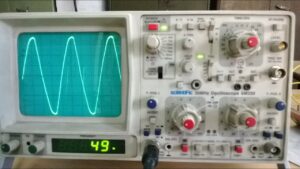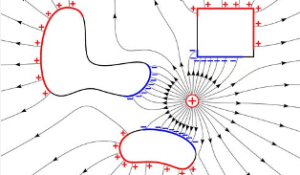Click here to register for summer batches of robotics. Click here for details of courses.
In previous circuit of Hartley oscillator, we used two coils L1 and L2 and one capacitor C. But in this circuit of Colpitt’s oscillator, we use two capacitors C1 and C2 with a single coil L. Its circuit diagram is given below:

Connection Details: As shown above, resistors R1, R2 and Re provide self bias to transistor T1. The capacitor Ce acts as bypass capacitor.
The tank circuit consists of one coil L with two capacitors C1 and C2. Their values control the output frequency. The capacitor C4 is decoupling capacitor which block DC component and allows only AC to pass through it.
The RF choke is used to limit the collector current of T1 to a safe value at high output frequencies. The capacitor C3 and resistor R2 provide self biasing to T1.
Working: When power supply is switched on, a small transient current is produced in tank circuit. So damped oscillations start. A small input signal is connected to the base of T1. This signal is amplified by T1 to produce large collector current.
The phase shift of 180° is produced by L with C1 and C2. Another phase shift of 180° is produced by transistor T1 (used in CE mode). So the feedback signal is in-phase with input signal.
The output frequency of the circuit is given by:

Where,
L = inductor in parallel with two capacitors
C’ = series combination of C1 and C2 – check the article of electrostatics to understand series-parallel combination of capacitors.
Advantages
- No variable capacitor in the circuit. So output frequency cannot be controlled easily.
- It provides good frequency stability in radio frequency range.




